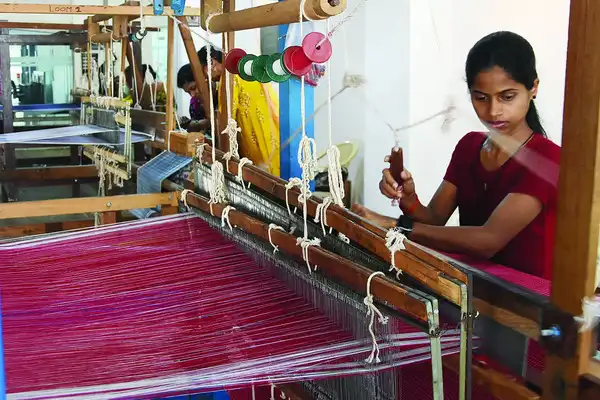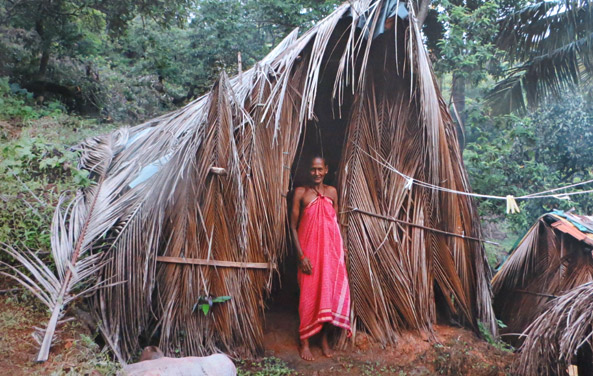
A Journey Through Time and Terrain
Sieving through a dense layer of transport, haphazard and junky on a hard road, one begins to feel a shift. The chaos of the city fades, giving way to a cool breeze, soft mud trails, and dense foliage. The road leads to Paliem, a quiet settlement in Goa inhabited by Konkani weaver families—people whose lives are stitched into the fabric of tradition. Giant trees, ancient and watchful, line the path to the home of Baburao Thilvey, one of the few remaining torchbearers of a craft under threat.
The Legacy of the Kunbi Saree
At the heart of Paliem’s heritage lies the Kunbi saree, a garment that is as much a cultural artifact as it is everyday attire. Recognizable by its red and white checkered pattern, the Kunbi saree reflects the identity and pride of the Kunbi tribe, one of Goa’s oldest indigenous communities. These sarees are handwoven using natural fibers and dyes, rooted in sustainability and simplicity.
Once worn daily by women working in the fields, these sarees offered both comfort and durability. The checked patterns weren’t just for aesthetics—they served as cultural codes, representing a tribe’s connection to the land and to each other.
A Dying Craft in a Changing World
Today, the looms in homes like Baburao’s are falling silent.
As machine-made textiles dominate the market, handloom fabrics have taken a backseat. Younger generations are drawn to urban life, leaving behind the knowledge passed down through their ancestors. Baburao, with decades of weaving behind him, continues his work not for profit but for preservation. “We don’t just weave cloth,” he says, “we weave memory. We weave our ancestors into every line.”
Reviving Threads of Culture
There is hope, however. Local artisans, designers, and NGOs have begun initiatives to revive this endangered craft. From incorporating modern designs into traditional sarees to organizing exhibitions and workshops, these efforts aim to reconnect the younger generation with their roots.
Additionally, with growing global interest in slow fashion and sustainable textiles, there’s a renewed appreciation for what the Kunbi saree represents—eco-consciousness, cultural richness, and handmade authenticity.
Weaving the Future
To protect the art of Kunbi weaving is to safeguard Goa’s intangible cultural heritage. These weavers carry stories not written in books but tied in knots and spun in threads. Through their craft, they quietly resist a world that moves too fast and forgets too much. By supporting Kunbi weavers in Goa—purchasing their sarees, sharing their stories, and recognizing their value—we actively become part of their fabric. In doing so, we help ensure that the rhythmic sound of the loom in Paliem continues to echo, not fade into silence. Ultimately, we play a role in preserving a tradition that can live on, generation after generation.


